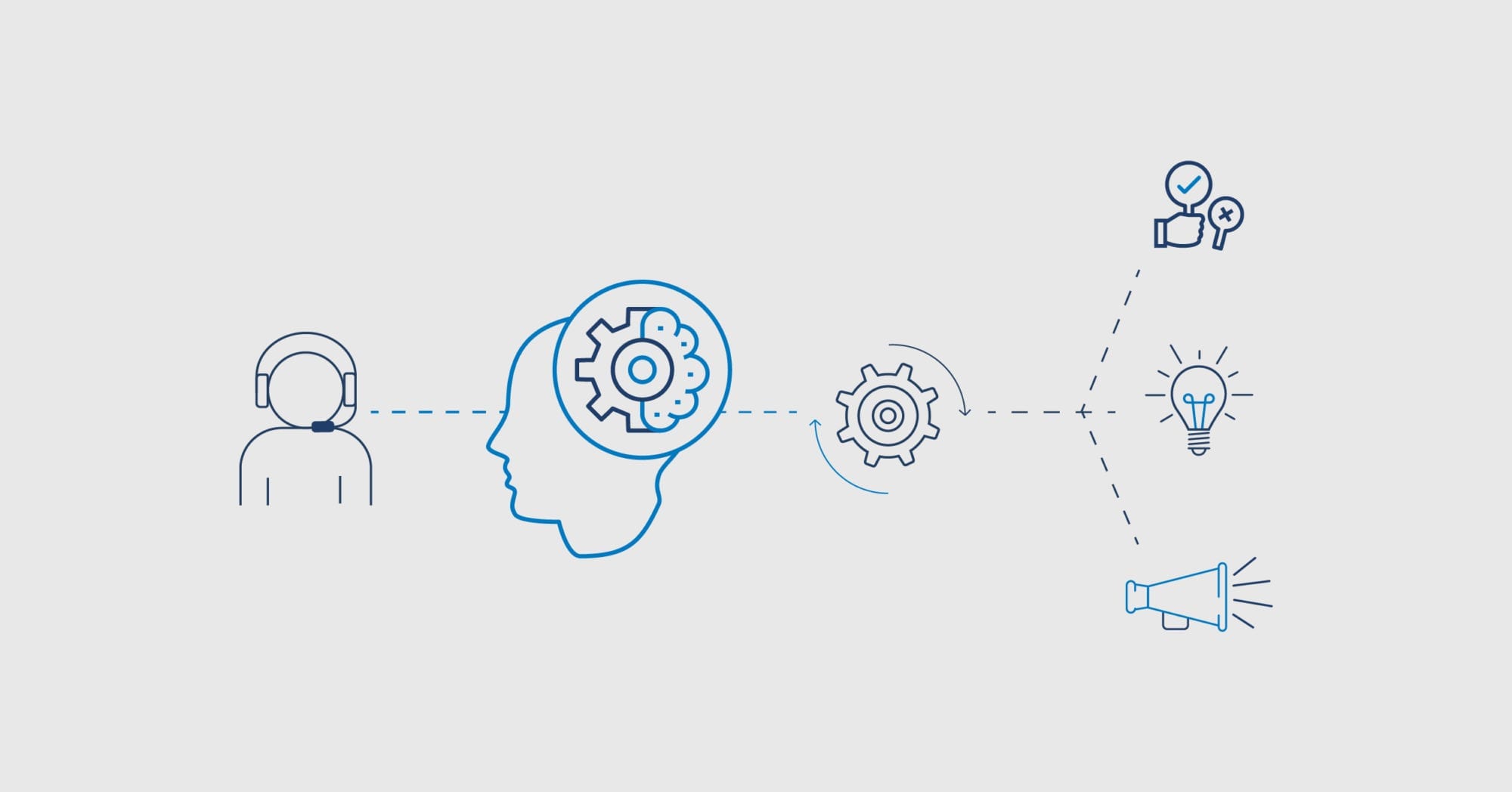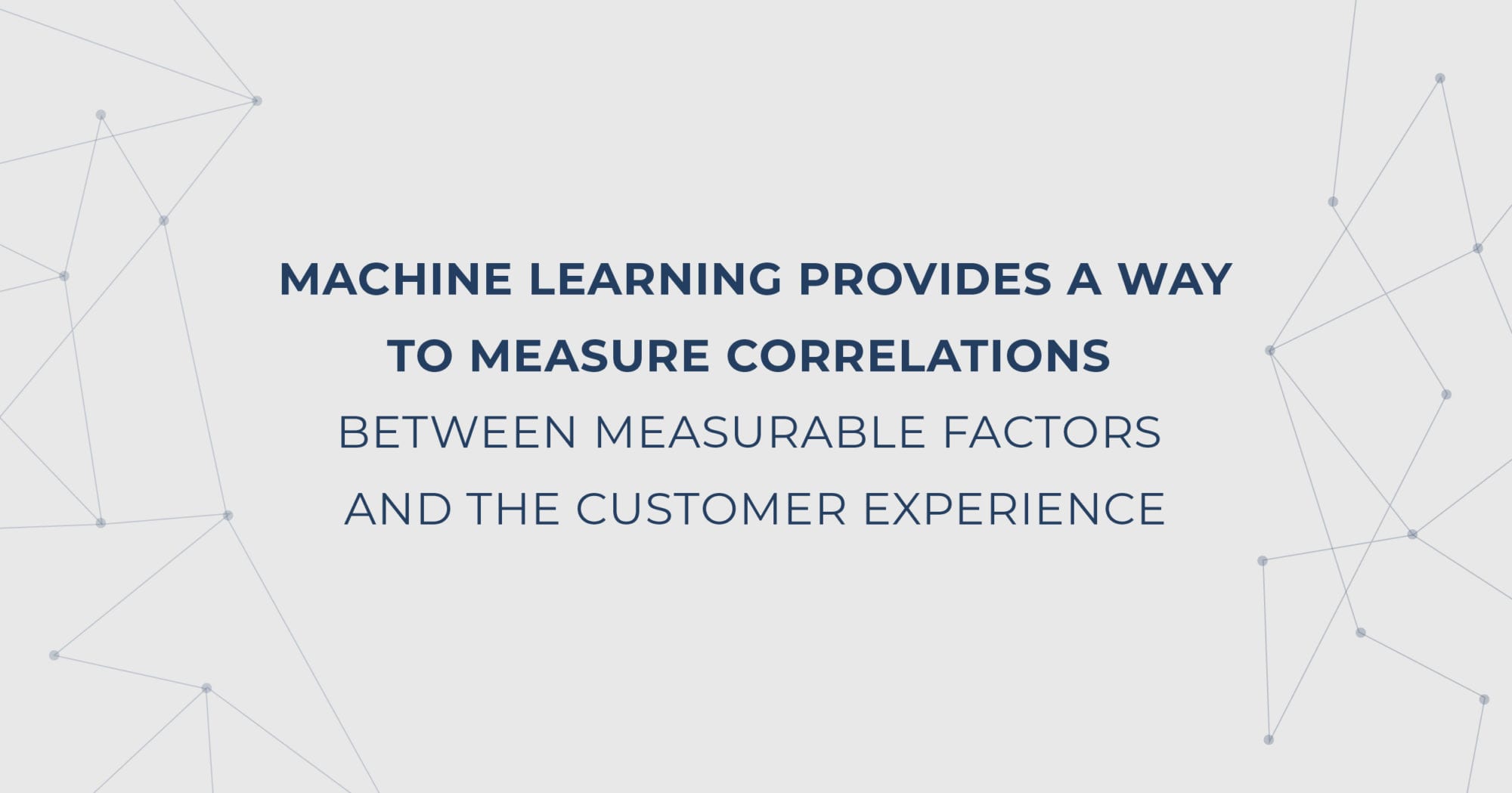The amount of data we create on a daily basis is growing by the year. Imagine how much of it is produced within your enterprise call center processing thousands of phone calls a day resulting in recordings and transcripts. The majority of these calls are never measured in full, only spot-checked. Typically, a center manager can only review a handful of calls a day, resulting in a large amount of missed and unused data.
This is where artificial intelligence comes into place. The use of artificial intelligence in an enterprise call center is not to replace your agents, but to empower them with the insights about their behavior as well as the customer’s. Enterprises can apply machine learning to find the full value from inbound and outbound calls. Leveraging AI for customer experience means a better understanding of customer intent, needs, satisfaction, agent behaviors, and enables customer experience improvements.

Have the Right Data to Get Started
Contact centers collect a wide variety of call data that have opportunities within multiple departments for use. For example, Marketing can learn about new leads, Customer Service can find churn reduction opportunities, and management can assess agent behaviors and training needs.
Beyond accepting calls from customers, data is only as good as how it’s collected. To reliably set the stage for effective AI in customer experience, the data collected needs to be simple and unambiguous, generally yes or no answers to direct questions.
The best data for machine learning model building is a simple orthogonal structure where all questions are phrased as yes/no questions and all conversations are scored for all questions.

Use the Strengths of Your Agents
Using AI for customer experience does not mean human agents are being replaced. In fact, it means the opposite. Agents are vital to gathering the data necessary to build machine learning models to parse the information your customers are communicating–either directly or indirectly through speech.
Many situations actually call for human communication to facilitate either escalating situations or determining problems that have arisen that the customer may not understand how to explain effectively. By automating the tedious tasks and calculations agents are doing post-calls, you can free up their times for more quality interactions with the customers that really need it.
Develop a Data-Friendly Culture
Reading the analytics of your conversations with your customers provides a unique quantitative view of the customer experience, which is cost-effective and is difficult to acquire by any other means. There are a number of changes that must go into place to deliver proper value to an organization.
The first challenge is often just getting access to call center recordings and joining that data with sufficient CRM data to bring together the audio with other customer data. Just because the data is there, doesn’t mean it’s all immediately usable, and deploying the right analytics software can make or break the transition period.

Focus on the Right Metrics
When focusing on NPS or CSAT scores are common when measuring customer experience, the actionable intelligence that drives the data is harder to find. The best way to utilize machine learning is to focus on the measurable data that is affected by the specific actions that drive customer satisfaction. Machine learning can measure issue resolution, detect support call drivers, or even design issues that frustrate customers.
These can lead to long, expensive support calls and indicate that new agent training is needed to improve the customer experience. Machine learning provides a way to measure the correlations between these measurable factors and customer experience and then allows leadership to see the improvements that happen in fundamental issues and behaviors.
Break the Silo
As mentioned earlier, your customer data is likely in multiple locations, siloed, or just not easily accessible to the parties that need to access the data. The potential value of this data across the organization is grossly misunderstood. It’s imperative to develop a collaborative approach across departments to analyze and share conversational data to trigger a significant shift for many companies.
VoiceBase provides the technology to extract this information from conversations and move into databases, scorecards, and dashboards where it can be joined with CRM data to enable detailed quantitative analysis of the entire customer experience. These views into the customer experience can be deployed everywhere in the organization, allowing your call center to become a center of excellence rather than cost.



